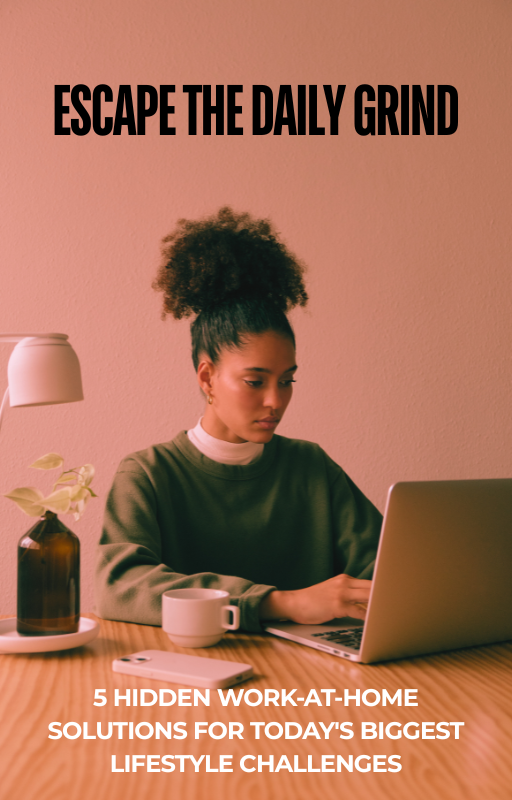Beyond the 9-5: How Working at Home Can Transform Your Lifestyle
The typical workday was built for a different era. It assumes you’re at your best from 9 to 5, five days a week, with a long lunch break to grab something and return to your desk.
It assumes you’re available for meetings at any time, that your life fits neatly around someone else’s schedule, and that you’re OK with using evenings and weekends to recover from the job that funds your life. But for most people, that system doesn’t work anymore. It’s draining. It’s limiting. And it leaves little room for anything beyond survival.
Working at home isn’t just about skipping the commute or working in pyjamas. It’s about designing your lifestyle around your values, not a company’s priorities. It means choosing when, where, and how you work.
It means building your day around your energy, goals, and family instead of squeezing all your needs into evenings. The impact of that kind of freedom goes far beyond convenience. It rewires your entire relationship with time, money, and yourself.
One of the most significant shifts you notice when you start working from home is how different time feels. Without a commute, you gain hours back every week—hours that used to disappear into traffic, parking lots, and waiting rooms.
Your reclaimed time can be used for rest, creative work, hobbies, or even building a second income stream. You’re not fighting against the clock every morning. You’re waking up without rushing, starting the day in your rhythm. That changes your stress levels, mood, and overall well-being.
You also stop compartmentalizing your life. In a 9-5 world, your day is split into harsh sections: work mode, family time, chores, errands, and sleep. Everything competes, and you’re constantly behind.
But when you work from home, especially when earning income online, you can blur those lines in ways that work for you. You can take breaks when you need them. You can stop in the middle of the day to attend a school event, walk the dog, or rest your eyes. Then, you can pick up where you left off without guilt or asking for permission. You’re not squeezing life in between work. You’re building work into your life.
Working from home also changes how you earn. In a traditional job, you get paid the same amount whether you give 60% or 120%. Raises are rare and often come with strings attached.
You’re always trying to prove your worth to keep up. But when you work for yourself, your income is no longer capped by a salary. You can earn based on the value you create, not just the clock hours.
That means you can build assets that continue to pay you over time—like digital products, affiliate income, courses, or content that keeps generating views and clicks. Instead of starting from zero every month, you’re stacking your efforts to grow over time.
This freedom to earn in creative, scalable ways doesn’t just benefit your bank account. It opens doors in your personal life, too. You can live where you want, travel more often, or move closer to family.
You can work from your kitchen, favourite café, a cabin in the woods, or a hotel room on the coast. As long as you have Wi-Fi, you’re good. That location freedom changes the way you think about your future. You’re not planning life around your job anymore. You’re choosing your lifestyle first and making your income fit around that vision.
It also changes how you show up for your health. Most jobs make it hard to prioritize physical and mental well-being. You sit too much, eat on the go, skimp on movement, and feel too depleted to do much after work.
When you work from home, you have more chances to move, eat meals you enjoy, and take breaks that recharge you. You don’t have to hide in the bathroom to breathe or fake energy you don’t have.
You get to work in a space that reflects your personality. You can light a candle, listen to music, open the windows, or work silently. You’re home.
Beyond the physical and mental benefits, working at home also transforms your sense of ownership. You no longer feel like a replaceable piece in someone else’s system. You’re building something of your own.
Yes, you’re responsible for it, but that responsibility is empowering—not suffocating. You’re making decisions that affect your future directly. You’re investing in skills and systems that serve you long-term. That kind of autonomy changes your confidence. You’re no longer just surviving. You’re building, growing, and choosing.
You also start to notice that you’re more present—not just physically but mentally. You’re not staring at the clock in meetings, counting down to the weekend, or avoiding life because work has drained you.
You’re in the moment more often. You’re available when it matters. You can take a slow morning with your kids. You can help a friend in the middle of the day. You can stop for lunch without rushing back to your desk.
You’re not just working from home. You’re living more fully because your work finally supports your life instead of consuming it. Shifting from a traditional job to working from home isn’t always easy.
It takes adjustment. You must build new routines, create a structure, and stay focused without someone looking over your shoulder. But the trade-off is worth it. You gain back your mornings.
You gain control over your schedule. You gain the ability to earn in ways that feel aligned with your interests and strengths. You gain room to breathe—and that’s not something most jobs offer, no matter how secure they seem.
If you’re stuck in the 9-5 grind, wondering if this is just how it should be, the answer is no. You don’t have to wait for a better job to appear. You can create one. You can build income from home, starting small, growing steadily, and shaping your days around what matters most.
The freedom and transformation are real. You have to step beyond the old structure and start building a new one that finally fits your life.


